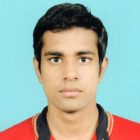Chloe Gentgen is a PhD candidate whose research lies at the convergence of planetary exploration, propulsion and trajectory design, and space sustainability. Her ambition is to lead robotic exploration missions to the outer solar systems as a space mission architect, and she has already designed and launched hardware that has flown in space. With the support of a MathWorks Fellowship, Chloe will expand her work to optimize hybrid propulsion for small satellites and design planetary exploration missions and concepts. Specifically, she plans to demonstrate through modeling and simulation that small satellites, known as CubeSats, would benefit from hybrid chemical-electric propulsion. Plans are underway for a demonstration mission that could enable Chloe to assemble and test a CubeSat with a hybrid propulsion payload. She has participated in several NASA and California Institute of Technology competitions, contributing to mission concepts for the dwarf planet Ceres and Saturn’s moon Titan. Currently, she leads an MIT team developing in-situ resource utilization for Mars. MathWorks tools, including Simulink, Optimization Toolbox, and Matlab-Astrodynamics-Library, as well as the MATLAB community itself, play a central role in Chloe’s work.
https://engineering.mit.edu/wp-content/uploads/2023/02/Gentgen-Chloe_Mathworks-2022.jpg
Website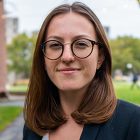
Chloe Gentgen
Aeronautics and Astronautics https://engineering.mit.edu/fellows/chloe-gentgen/Matthew Goss is a PhD candidate in the field of atmospheric chemistry whose central research interest is the oxidation chemistry of atmospheric organic compounds. Specifically, Matthew is developing new approaches for studying atmospheric oxidation chemistry and providing valuable insights into the formation of atmospheric particulate matter (PM), which is directly related to poor air quality and global climate. As a MathWorks Fellow, Matthew will explore these processes through an innovative coupling of laboratory atmospheric chemistry studies and detailed mechanistic modeling powered by MATLAB. In addition to filling knowledge gaps in PM chemistry, his work will identify key model parameters for use in large-scale models of atmospheric composition and chemistry. Matthew’s goals include a deeper understanding of atmospheric oxidation of dimethyl sulfide (DMS), a compound representing one of the largest natural sources of atmospheric sulfur, which may in turn illuminate other key chemical transformations, such as the rearrangement of organic peroxy radicals (RO2) formed in most organic oxidation processes. By applying his newly developed models to past studies of organic PM formation (conducted prior to our contemporary understanding of RO2 chemistry), Matthew’s research could pave the way to major improvements in global climate modeling.
https://engineering.mit.edu/wp-content/uploads/2023/02/Goss-Matthew_CEE_MathWorks-2022.jpg
Website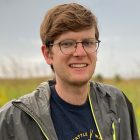
Matthew Goss
Civil and Environmental Engineering https://engineering.mit.edu/fellows/matthew-goss/Emily Hanhauser is a PhD candidate who is applying her expertise in engineering and biology to develop health care technologies that dramatically improve equity and access. Her current research is focused on the creation of next-generation diagnostics to rapidly test for infectious diseases. As a MathWorks Fellow, Emily will continue her efforts to create a new diagnostic assay for rapid detection of viruses or bacteria from liquid samples. This new tool, called a vibration- induced dissociation assay (VIDA), provides a way to rapidly isolate and detect pathogens and cells in a simple and integrated fashion, with high sensitivity. VIDA is simple, cost-effective, and deployable in decentralized settings, such as clinics and primary care centers, where most of the global population accesses healthcare. Moreover, VIDA is extremely adaptable and can be applied to whole cell, protein, or nucleic acid detection. MathWorks tools, such as MATLAB’s Image Processing Toolbox, are foundational to Emily’s work, allowing her to advance an exciting, new modality for point-of-care diagnostics with the potential to broadly improve health outcomes around the world.
https://engineering.mit.edu/wp-content/uploads/2023/02/Hanhauser-Emily_Mathworks-2022.jpg
Website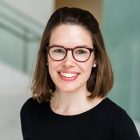
Emily Hanhauser
Mechanical Engineering https://engineering.mit.edu/fellows/emily-hanhauser/Andrea Henshall, a retired major in the United States Air Force, is a doctoral candidate whose research focuses on multiagent reinforcement learning for search and rescue. Her overall goal is to advance new algorithms for tactics. As a MathWorks Fellow, she seeks to develop algorithms in a multifidelity learning framework and undertake real-world experiments in a model-free manner using extended reality environments for robotic vehicles. In addition to these research contributions, she plans to develop an imitation learning and reinforcement learning tutorial that combines MATLAB’s complex models for aerial vehicles and data collected from real-world experiments. She envisions that these complex simulations will include both extremely realistic visual simulations as well as their extended reality components—all built on the existing complex modeling paradigms and sophisticated simulation models that already exist in the MATLAB environment. Through her cutting-edge work, Andrea could develop algorithms that are as good as humans or even surpass our capabilities.
https://engineering.mit.edu/wp-content/uploads/2023/02/Henshall-Andrea_AeroAstro_MathWorks-2022.jpg
Website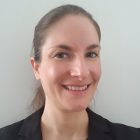
Andrea M. Henshall
Aeronautics and Astronautics https://engineering.mit.edu/fellows/andrea-m-henshall/Dominique Hoskin is a PhD candidate investigating transitional hypersonic boundary layers and shockwave boundary layer interactions, with a specific focus on boundary layer receptivity to freestream disturbances. A key objective of his work is discovering the sensitivity of hypersonic boundary layer simulations to computational grid resolution in the leading-edge region. As a MathWorks Fellow, Dominique will focus on using the EXASIM code, a massively parallel high- order discontinuous Galerkin finite element code, to perform direct numerical simulations in three dimensions on a hypersonic flat plate with and without an impinging shockwave. To accomplish these objectives, he has been given an allocation of node hours on the SUMMIT supercomputer at the US Department of Energy’s Oak Ridge National Laboratory. The anticipated results of his work could greatly improve the understanding and management of boundary layer transition on hypersonic vehicles, which is essential to vehicle design and performance. More broadly, his work could have significant implications for the performance of high-speed vehicles.
https://engineering.mit.edu/wp-content/uploads/2023/02/Hoskin-Dominique_MathWorks-2022.jpg
Website
Dominique Hoskin
Aeronautics and Astronautics https://engineering.mit.edu/fellows/dominique-hoskin/Zhongqiang Hu is a PhD candidate exploring the fields of quantum spintronics and topological physics with the goal of offering both fundamental new knowledge and industry applications. MathWorks software, especially MATLAB, has been a central component of Zhongqiang’s work, advancing numerical simulation, symbolic derivation, data acquisition, and analysis. With the support of a MathWorks Fellowship, he is determined to build a more complete physical model and to discover evidence of his previous theoretical studies on the topological band structures of spin waves. Zhongqiang’s work, which has already uncovered new physics and mechanisms, could lead to useful applications such as directional propagation of microwave signals, which are critical for many classical communication and quantum computing applications. Recently, he has begun to explore the mutual interactions between spin waves in magnetic films and nitrogen vacancy centers, quantum defects in diamonds. This work could prove pivotal for spintronics-based quantum computing. In the future, Zhongqiang plans to develop and share the MATLAB tools that he has created to further additional work in the topological analysis of quantum spintronic materials, and more general physical systems.
https://engineering.mit.edu/wp-content/uploads/2023/02/Hu-Zhongqiang_Mathworks-2022.jpg
Website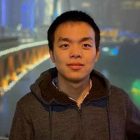
Zhongqiang Hu
Electrical Engineering and Computer Science https://engineering.mit.edu/fellows/zhongqiang-hu/Xinjie Ji is a PhD candidate in computational fluid dynamics and ocean engineering whose research focuses on biologically inspired underwater propulsion, and more generally, on the use of flexible and morphing structures within a fluid flow. As a MathWorks Fellow, Xinjie will investigate the immersed interface method (IIM) for fluid-body coupling problems within the context of the 2-D incompressible Navier–Stokes equations. This project builds on prior work in which Xinjie and colleagues implemented and validated a method for one-way and two-way coupling problems. MATLAB has played a key role in her research, allowing her to study complex fluid dynamics through computational modeling and to develop and test new algorithms. As her work progresses, she plans to explore more complex problems such as two-phase flow and fluid-structure interaction, extend the IIM to a broader range of ocean engineering challenges, and continue to leverage MATLAB to improve design and control of ocean engineering applications.
https://engineering.mit.edu/wp-content/uploads/2023/02/Ji-Xinjie_MechE_MathWorks-2022.jpg
Website
Xinjie Ji
Mechanical Engineering https://engineering.mit.edu/fellows/xinjie-ji/Xiaojia (Cindy) Jin is a PhD candidate whose research interests include next-generation biosensors for improved diagnostics and pharmacokinetic modelling of cancer therapeutics. Cindy has already made contributions to detecting and quantifying the hormones cortisol and progesterone and the detection of SARS-CoV-2 viral proteins. As a MathWorks Fellow, Cindy will focus on applications of Nanosensor Chemical Cytometry (NCC), a technique she helped to invent, which utilizes the flowing cell itself as a highly informative Gaussian lens to project near-infrared emission profiles and extract rich information. Cindy and her colleagues successfully deployed NCC to characterize the chemical efflux from monocyte and macrophages and profile the immune heterogeneities within the population, which may be an important tool for development of cell-based therapeutic applications. Cindy is also contributing to work on a pharmacokinetic (PK) model to predict the biodistribution of chemotherapeutics, a framework that could support the development of intratumor chemotherapeutic sensors to monitor drug efficacy in clinical trials. Her broad-ranging research makes extensive use of MATLAB and is yielding tools with the potential to help address major challenges in medicine and global health.
https://engineering.mit.edu/wp-content/uploads/2023/02/Jin-Xiaojia_ChemE_MathWorks-2022.jpg
Website
Xiaojia (Cindy) Jin
Chemical Engineering https://engineering.mit.edu/fellows/xiaojia-cindy-jin/Suhan Kim is a PhD candidate working at the frontier of bio-inspired microrobotics to create insect- scale robots capable of insect-like mobility and functions. Specifically, his research is focused on new design tools and fabrication methods. Suhan has designed both hardware and software systems for microscale robotic research and developed both a honeybee-inspired aerial robot and an ant-inspired legged robot. As a MathWorks Fellow, he will continue this innovative work, including his lead role in a project that leverages soft actuator electroluminescence to enable vision-based tracking for the outdoor flight of microscale robots. Suhan’s work extensively leverages MathWorks tools. Examples include his use of MATLAB to automate robot design workflow and to develop custom design tools; and his use of Simulink Real-Time to control microscale aerial robots. Ultimately, Suhan hopes to develop a “microrobotic toolkit” to support researchers in microrobotics and potentially enable roboticists in many fields to efficiently design microscale robots.
https://engineering.mit.edu/wp-content/uploads/2023/02/Kim-Suhan_MathWorks-2022.jpg
Website
Suhan Kim
Electrical Engineering and Computer Science https://engineering.mit.edu/fellows/suhan-kim/Suyong Kim is a PhD candidate whose research applies optical diagnostics and computational modeling techniques in the fields of energy materials and energy sustainability. As a MathWorks Fellow, Suyong will pursue two primary projects. The first focuses on modeling the combustion of metal fuels as a promising candidate of carbon-neutral energy source. His second project aims at creating a practitioner design tool for an improved charcoal-fired cookstove to protect the health of people who use inefficient and highly polluting products for cooking, space heating, and food preservation. Suyong uses MATLAB to develop a new data-driven framework that derives chemical kinetic mechanisms and transport properties of solid fuels based on optical diagnostics. He also builds a reduced-order model to guide the design of metal fuels and improved cookstoves. Such an image-based modeling framework and reduced order model could be generalized to many other applications such as medicine modeling and chemical looping.
https://engineering.mit.edu/wp-content/uploads/2023/02/Kim-Suyong_MechE_MathWorks-2022.jpg
Website
Suyong Kim
Mechanical Engineering https://engineering.mit.edu/fellows/suyong-kim/Yeji Kim is a PhD candidate whose research draws upon materials chemistry, electrochemistry, and bioelectronics to design novel magnetic approaches for neuromodulation. As a MathWorks Fellow, she will pursue new strategies for remote modulation of cell signaling mediated by magnetic nanoparticles (MNPs)—an innovative approach that offers minimally invasive manipulation of physiology and behavior. Specifically, Yeji is designing a nanomaterial capable of transducing magnetic fields into heat, and the heat per particle reaches 3000-times higher than conventional magnetothermal MNPs for remote activation of heat-sensitive ion channels in neurons. Early results for these functionalized MNPs are extremely promising: they have the record of the magneto- thermal transduction properties of the nanoscale materials, which are sufficient to drive neural activity in the presence of a magnetic field. Her next aim is to and combine this property with an ion channel targeting method. MATLAB has played a critical role at all stages of this work, enabling her to interface hardware and software for neuromodulation tool development and to interpret the bio-signals. Yeji’s research offers valuable contributions to neuromodulation and has the potential to support the exploration of numerous challenges and unanswered questions in neuroscience.
https://engineering.mit.edu/wp-content/uploads/2023/02/Kim-Yeji_MathWorks-2022.jpg
Website
Yeji Kim
Materials Science and Engineering https://engineering.mit.edu/fellows/yeji-kim/Beatriz Klink is a PhD candidate whose research explores the machine-learning (ML) and artificial- intelligence aspects of tunnel boring machines (TBMs). The goal of Beatriz’s research, supported by a MathWorks Fellowship, is to develop the first ML-based TBM operator assistance tool, eventually leading to automated geologic predictions for control of TBMs. Another major component of Beatriz’s work is techno-economic analysis (TEA) of TBM automation to provide a proof-of-concept and thorough assessment of relevant economic, social, and environmental factors. MATLAB is essential for the modeling and data visualization that is central to these research aims, and Beatriz hopes to add to the MATLAB tools that support TEAs for other technologies, with a new interface for an existing MATLAB sensitivity analyzer to simplify parameter input and data analysis. Her research has the potential to provide valuable tools and information for stakeholders in TBM applications, from designers and operators to businesses and governments.
https://engineering.mit.edu/wp-content/uploads/2023/02/Klink-Beatriz_CEE_MathWorks-2022.jpg
Website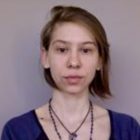
Beatriz G. Klink
Civil and Environmental Engineering https://engineering.mit.edu/fellows/beatriz-g-klink/Akshay Kothakonda is a PhD candidate whose research bridges aerospace, mechanical, biomedical, and chemical engineering to create next-generation planetary spacesuits with terrestrial applications in biomedical technology. Specifically, he is investigating advancements in the mechanical counter pressure spacesuit concept using computational modeling, advanced materials, and textiles. As a MathWorks Fellow, Akshay has already developed novel finite element analysis models for fabrics and a thermomechanical model for shape memory polymers (SMP). He is now working on an innovative technique to implement these models on 2-D manifolds using spatial Fourier transform as boundary conditions that correspond to suited movements. The overarching objectives include developing, validating, and using these models to determine the optimum fabric pattern that would adequately pressurize the astronaut’s body using SMP and would minimize the suit’s stiffness during movements. Terrestrial applications of this work, such as medical compression garments, are also being explored. MATLAB is a key component of Akshay’s work pairing innovative experimental design and rigorous computational analysis. His research represents a valuable contribution and holds significant potential to improve human lives, both in space and on Earth.
https://engineering.mit.edu/wp-content/uploads/2023/02/Kothakonda-Akshay_MathWorks-2022.jpg
Website
Akshay Kothakonda
Aeronautics and Astronautics https://engineering.mit.edu/fellows/akshay-kothakonda/Ashutosh Kumar is a PhD candidate whose research combines microbiology, bioengineering, artificial intelligence (AI), big data, and materials science with the goal of understanding the relationship between bacteria and cancer. With the support of a MathWorks Fellowship, Ashutosh will pursue innovative research building on two recent findings in cancer research: that bacteria may play a role in chemotherapy resistance and modulating responses to immunotherapy, and that certain tumors are associated with specific microbiomes. His work focuses on ovarian cancer, a lethal cancer that often exhibits strong chemoresistance and has a specific bacterial profile. Using experimental techniques, microbiome sequencing, and AI, Ashutosh hopes to predict microbial- based biomarkers and cluster them based on cancer types to pinpoint microbiome changes that may be connected to poor patient outcomes. Next, he plans to engineer bacteriophage-based therapeutics to probe the bacteria present in tumors and reprogram them for cancer therapies. MATLAB’s Bioinformatics Toolbox and Statistics and Machine Leaning Toolbox are essential to this work. By elucidating the role of bacteria in cancer, Ashutosh’s research has the potential to make a major impact in cancer diagnostics and therapeutics.
https://engineering.mit.edu/wp-content/uploads/2023/02/Kumar-Ashutosh_MathWorks-2022.jpg
Website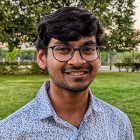
Ashutosh Kumar
Materials Science and Engineering https://engineering.mit.edu/fellows/ashutosh-kumar/Benjamin Lahner is a PhD candidate who is expanding the frontiers of computational neuroscience, with research that applies cutting-edge data analysis and machine-learning methods to advance studies of the human brain. As a MathWorks Fellow, Benjamin will continue his work to compare functional neuroscience imaging data with deep neural networks and devise original ways to utilize that data. In his most recent work, Benjamin combined high resolution spatial and temporal data to examine information flow through the brain and to explore complex perceptual processes, such as how we remember images or categorize sounds. MATLAB is crucial to Benjamin’s research, enabling him to relate properties of human sensory perception with deep neural networks and dramatically speed data processing and analysis while maintaining precision and accuracy. Benjamin plays a leadership role in The Algonauts Project, a series of public challenges and workshops that bring biological and artificial-intelligence researchers together to build neural networks that explain the human brain. In his own research, and through The Algonauts Project, he is pushing the boundaries of computational neuroscience and inspiring more interdisciplinary research.
https://engineering.mit.edu/wp-content/uploads/2023/02/Lahner-Benjamin__MathWorks-2022.jpg
Website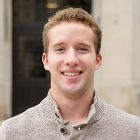
Benjamin Lahner
Electrical Engineering and Computer Science https://engineering.mit.edu/fellows/benjamin-lahner/Kir Latyshev is a PhD candidate who integrates expertise in astrodynamics with system architecting methods for analyzing new innovative space systems to advance space exploration. Specifically, Kir is working to develop tools and methods to support lunar and Mars exploration. His previous work includes valuable contributions to a study sponsored by Blue Origin and led by MIT with the goal of understanding how the Human Landing System Descent Element technology could be used in future Mars missions. In his master’s thesis, Kir demonstrated the benefit of the Lunar Gateway in Human Landing System operations. This work yielded valuable new findings on the impact of reusability on the Human Landing System architecture tradespace and key potential drawbacks to NASA’s present choice of orbit for the Lunar Gateway. His current work explores space logistics architectures for a commercial orbital station serving NASA astronauts, private crews, and space tourists. MATLAB tools, which Kir regularly uses for modeling space exploration systems and conducting system architecting studies, are vital to his work. Kir’s research holds great value for the lunar exploration engineering community and has the potential to significantly advance space exploration.
https://engineering.mit.edu/wp-content/uploads/2023/02/Latyshev-Kir_MathWorks-2022.jpg
Website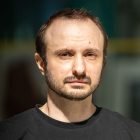
Kir Latyshev
Aeronautics and Astronautics https://engineering.mit.edu/fellows/kir-latyshev/Serin Lee is a PhD candidate whose research interests lie at the intersection of energy materials and sustainability. Specifically, she is breaking new ground in the use of quantitative electron microscopy techniques to study energy materials with potential impacts on sustainable energy. As a MathWorks Fellow, Serin will pursue two projects on battery aging and fuel cell catalyst deactivation. Her aim is to understand changes in the materials structure during functioning with the broader goals of improving performance and unlocking the full potential of renewable energy sources. Recently, Serin has achieved exciting results using a modified liquid cell technique for imaging hybrid organic/inorganic particles that are known to self-assemble upon cooling from elevated temperature. MATLAB has been an essential component in Serin’s research, including helping to model her quantitative interpretation of liquid cell TEM data and other core functions. This work holds the promise of being a valuable contribution to the microscopy community. Due to the generality of calibration and data analysis issues in all liquid cell experiments, Serin’s research work may also advance other areas liquid cell research and ultimately speed progress toward sustainable energy.
https://engineering.mit.edu/wp-content/uploads/2023/02/Lee-Serin_Mathworks-2022.jpg
Website
Serin Lee
Materials Science and Engineering https://engineering.mit.edu/fellows/serin-lee/Paul Lilin is a PhD candidate whose research seeks to uncover the governing properties and mechanisms of drying suspensions of colloidal particles, which are found all around us, from coffee and blood to semiconductor coatings and paints. As a MathWorks Fellow, Paul will be using his custom experimental model system, consisting of a millimetric drop deposited on a flat surface, to investigate the dynamics, fracture patterns, and surprising large-scale bending deformation of colloidal suspensions during drying. MATLAB tools and the MathWorks community have played a key role in Paul’s research, enabling him to analyze complex images, produce accurate and detailed visuals, and conduct simulations that challenge current theories. By shedding new light on the mechanisms of crack pattern selection, drying-induced bending and related phenomena, Paul’s research could have a significant impact in the development of next-generation medical diagnostics and in the field of microfabrication more broadly.
https://engineering.mit.edu/wp-content/uploads/2023/02/Lilin-Paul_MechE_MathWorks-2022.jpg
Website
Paul Lilin
Mechanical Engineering https://engineering.mit.edu/fellows/paul-lilin/Lee Lopez is a PhD candidate whose research applies computation methods of investigation to hypersonic aerothermodynamics. Specifically, Lee studies the physical phenomenon of shock-wave boundary-layer interaction (SBLI) and the effectiveness of liquid metals to transfer thermal energy from vehicle surfaces at hypersonic velocities. As a MathWorks Fellow, Lee will pursue new insights about pressure and thermal loads on vehicle surfaces. This research is expected to have major implications for the control of high-speed vehicles in commercial and defense-related settings. The project’s ultimate goal is to quantify the effect of surface cooling, achieved by actively pumping a fluid coolant underneath a hypersonic vehicle’s surface, on SBLI dynamics. The broad potential applications of Lee’s research include enhanced design of hypersonic control surfaces, as well as ramjet and scramjet engine inlets. Through his cutting-edge work, Lee is helping to advance the field of aerothermodynamics, both in basic scientific knowledge and real-world applications.
https://engineering.mit.edu/wp-content/uploads/2023/02/Lopez-Lee_MathWorks-2022.jpg
Website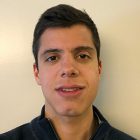
Lee Lopez
Aeronautics and Astronautics https://engineering.mit.edu/fellows/lee-lopez/Saurav Maji is a PhD candidate whose research is focused on security challenges, and solutions, for Internet of Things (IoT) devices. His past achievements include projects to enhance the security of implantable medical devices, while his current work addresses the need for improved security in machine-learning and agricultural applications. As a MathWorks Fellow, Saurav will advance two projects concerning side-channel security issues for embedded neural network hardware and software implementations, with the goals of implementing robust neural networks and providing end-to-end security. In the first project, Saurav has demonstrated the potential for significant information leaks on neural networks through timing-based attacks and devised a simple, cost-effective neural network accelerator with low-overhead error detection features. His second project addresses security challenges in agriculture applications, such as the increased circulation of counterfeit seeds and other products that threaten both smallholder farms and sustainable food production. Saurav’s research has yielded innovative, hardware security and materials solutions to stem these threats. MATLAB is an indispensable tool in Saurav’s research, advancing high-impact research with the potential to offer improved, low-cost security for a wide range of IoT devices and applications.
https://engineering.mit.edu/wp-content/uploads/2023/02/Maji-Saurav_MathWorks-2022.jpg
Website